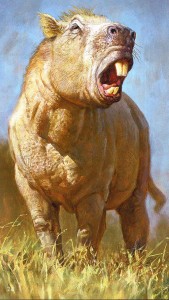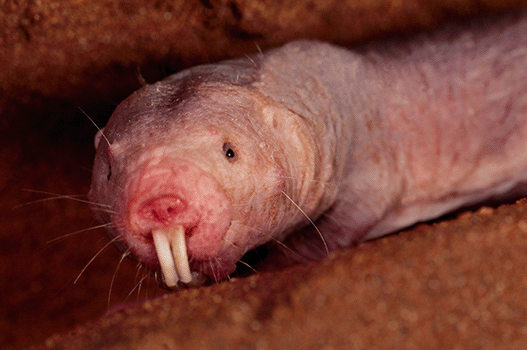Prehistoric Guinea Pig Was As Big As a Buffalo
Wednesday, February 4th, 2015February 4, 2015
A 3-million-year old relative of guinea pigs was as large as a buffalo, had a bite as strong as a tiger, and used its tusklike front teeth as an elephant would, according to a new analysis of fossils published this week by an international team of scientists in the Journal of Anatomy. Scientists from the University of York used computer modeling to reconstruct the skull of Josephoartigasia monesi, a gigantic fossil rodent. In 2007, this fossil was discovered in Uruguay by paleontologists (scientists who study animals, plants, and other living things from prehistoric times [more than 5,500 years ago]). Josephoartigasia is the largest rodent species ever discovered.

An artist’s impression of a giant, prehistoric rodent as big as a buffalo found as a fossil in Uruguay. (Credit: James Gurney/University of York)
Josephoartigasia roamed the grasslands of what is now South America during the Pliocene Epoch (about 5.3 million to 2.6 million years ago), a warm period that occurred before the Ice Age. Huge mammals, such as mammoths and giant sloths, were abundant in North and South America during this period. The Isthmus of Panama also formed around this time as North and South America collided. The isthmus (narrow strip of land connecting larger bodies of land) enabled land animals to pass between North and South America. Josephoartigasia likely became extinct soon after this event, about 2 million years ago.
In addition to its massive size—far larger than any rodent ever seen, living or in the fossil record—Josephoartigasia had large, tusklike incisor teeth at the front of its jaw. The scientists analyzed the skull of Josephoartigasia using a computer-simulation technique that calculates the force and strain acting on a complex geometric object, such as an animal’s jaw. They found that Josephoartigasia had incredibly strong incisor (front) teeth compared with other large rodents and a bite as strong as a modern tiger. Scientists think that Josephoartigasia probably used its giant teeth in the same way an elephant uses its tusks—to dig for food and defend itself from predators.
Other World Book articles:



